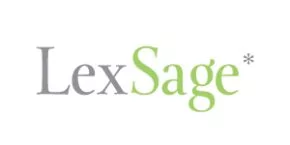Canada does not have a single customs duty or tariff rate for all imports. Over the years, Canada has entered into a number of free trade agreements. A tariff rate code is assigned for every free trade agreement partner because tariff elimination commitments and tariff reduction schedules cause applicable tariff rates to be different from the MFN (most-favoured nation) tariff rate that Canada agreed to at the World Trade Organization. The Canada-Ukraine Free Trade Agreement comes into effect on August 1, 2017. As a result, of the new free trade agreement, a new tariff rate code has been announced.
The Tariff Rate Code (also known as “Tariff Code”) is put in Box 28 of the B3 Canada Customs Coding Form. It is important to know what Tariff Code is applicable – otherwise, you may pay too much or too little customs duties to the Government of Canada. Since goods and services tax (“GST”) and harmonized sales tax (“HST”) (where applicable) is charged on top of a customs duties included price, you would also pay too much or too little GST/HST. You want to pay the right amount of customs duties and GST/HST so that the Canada Border Services Agency (“CBSA”) does not impose administrative monetary penalties (“AMPs”). Customs duties are calculated as follows:
value for duty X applicable tariff rate (which aligns with a tariff rate code)
The following table sets out Canada’s Tariff Code categories under the Customs Tariff (Canada) and the CBSA reporting codes as at July 14, 2017:
| Tariff Treatment Category | Abbreviation | CBSA Reporting Code |
| Most-Favoured-Nationa (MFN) | MFN | 2 |
| General Tariff | GT | 3 |
| Austrailia Tariff | AUT | 4 |
| New Zealand Tariff | NZT | 5 |
| Commonwealth Caribbean Countries Tariff | CCCT | 7 |
| Least Developed Countries Tariff | LDCT | 8 |
| General Preferential Tariff | GPT | 9 |
| United Stated Tariff | UST | 10 |
| Mexico Tariff | MT | 11 |
| Mexico-United States Tariff | MUST | 12 |
| Canada-Israel Agreement Tariff | CIAT | 13 |
| Chile Tariff | CT | 14 |
| Costa Rica Tariff | CRT | 21 |
| Iceland Tariff | IT | 22 |
| Norway Tariff | NT | 23 |
| Switzerland-Lichtenstein Tariff | SLT | 24 |
| Peru Tariff | PT | 25 |
| Columbia Tariff | COLT | 26 |
| Jordan Tariff | JT | 27 |
| Panama Tariff | PAT | 28 |
| Honduras Tariff | HNT | 29 |
| Korea Tariff | KRT | 30 |
| Ukraine Tariff | UAT | 32 |
It can be assumed that the European Union Tariff Rate Code will be
31 (which was to come into effect on July 1, 2017, but has been
delayed to September 21, 2017). There is only one rate in the
Canada-EU CETA for the European Union. We will know more when
the CBSA issues a Customs Notice regarding the implementation of
the Canada-EU CETA (expected in late August).
The content of this article is intended to provide a general guide to the subject matter. Specialist advice should be sought about your specific circumstances.

